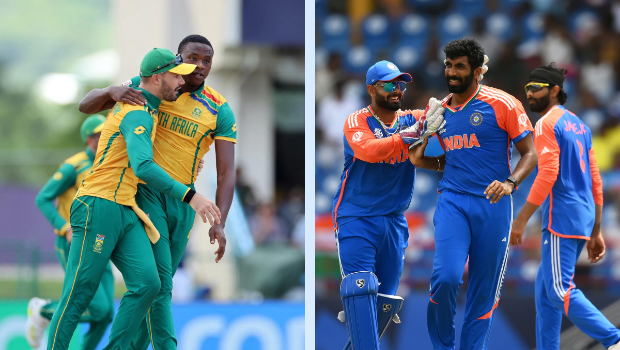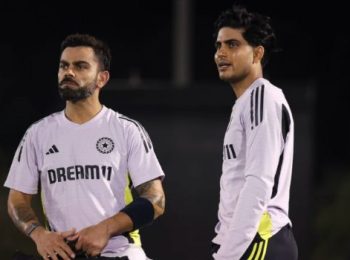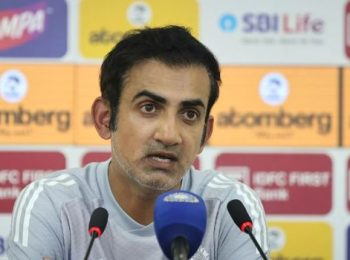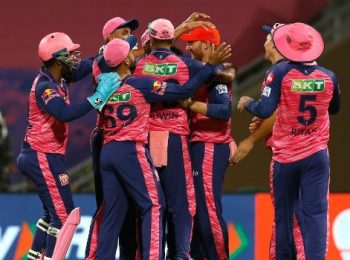Both India and South Africa are dealing with a degree of uncertainty surrounding the fitness of key players, and that naturally adds another layer of tension to the second Test. From India’s perspective, there remains considerable hope that Shubham Gill will recover in time, although that possibility currently appears doubtful. The latest update on his condition is unclear, but what is certain is that his absence during the major part of the first Test proved extremely significant. His omission had a noticeable impact on India’s performance, which in many ways is a testament to just how important he has become.
Gill has settled into the role of Indian captain with remarkable composure, establishing himself not only as a leading player but also as an influential decision-maker. In contrast, there were moments when Rishabh Pant allowed the game to drift more than it should have.
On the South African side, the presence and fitness of players like Simon Harmer and Marco Jansen remain crucial, further highlighting how injuries could shape the trajectory of this series.
With injuries in the background, the next match becomes a massive opportunity—and a significant test—for India. Several aspects of their decision-making in the first game were not at their best. Despite the uncertainty surrounding Gill, I feel Sai Sudharsan should play regardless of Gill’s availability. Sai, to me, is an essential part of the frontline batting line up, and the idea of Washington Sundar batting at number three does not quite seem ideal. Should Gill be unable to return, the likely scenario is that Sai will slot in, allowing Sundar to move down into the late middle order, which would give the team a far better structural balance. The selection and batting order in the previous match appeared somewhat puzzling, and this adjustment would offer more stability.
The pitch conditions are also expected to play a key role. There is uncertainty over who has the authority to dictate the nature of the surface, and it is unclear how much influence India holds in this regard. However, as mentioned earlier before the first Test, these are not the type of pitches India should be playing on at the moment. Ideally, India requires good surfaces that begin to deteriorate around days three, four, and five, allowing their spinners to become increasingly effective. The pitch in the first Test seemed to favour the opposition more than the home side, especially considering the strength of South Africa’s spin attack. With bowlers such as Simon Harmer, Keshav Maharaj, and Muthuswamy available—and
the possibility of using all three—South Africa were well served by conditions that played into their strengths. From that perspective, the pitch ended up assisting the visitors more than India, which is not what one would expect in home conditions.
In Guwahati, where the next match is scheduled, the pitch generally tends to offer a fair surface in the early days. That is something India would want to utilise, particularly because it aligns with one of their major strengths: a solid top four or five, even with out Gill. Rishabh Pant is likely to slot in at number four, and Dhruv Jurel may be moved slightly up the order. With Sai expected to return, India still possesses a strong and capable batting unit. The key is to give these players the right conditions to assert themselves and make meaningful contributions.
There has been some discussion in the media about whether Ruturaj Gaikwad should be brought in, primarily because he provides a right-handed option against Harmer, given that India has several left-handers. But that line of reasoning does not carry much weight here. I think that the best player should always be picked, and only in situations where two options are equally balanced does the left-hand or right-hand match-up matter. In this case, Sai deserves backing, support, and opportunities, making him the preferred choice rather than selecting a right-hander solely because of Harmer’s presence. After all, South Africa have both left-arm and right-arm bowlers, so overthinking the match-ups could distract from choosing the right personnel.
Turning to South Africa, they were highly impressive in the first Test. They maintained composure throughout, and while the conditions in Kolkata were not ideal for them, they nonetheless presented the visitors with their best chance to manage and restrict India’s formidable batting order. Simon Harmer was outstanding. He is known for being honest and thoughtful when reflecting on his performance. Having followed his progress closely, it is clear that he has improved significantly over the last five years, thanks in large part to extensive county cricket experience. He understands his game thoroughly, and it is no surprise that he has performed much better on this tour of India than he did previously. With his experience in Indian conditions, he stands out as a genuine match-winner if fit and available.
Kagiso Rabada’s availability would also be a major boost for South Africa. Ideally, he comes straight back into the playing XI. However, much depends on Marco Jansen’s fitness. Jansen provides the advantage of left-arm variety and contributes useful lower order runs, making him a valuable component in balancing the side. If he is unavailable, South Africa may need to adjust the composition of their team slightly. Even so, having Rabada in the side is a huge positive, regardless of the balance they eventually settle on.
South Africa appear confident and well-prepared. As noted earlier, this seemed a good time for them to tour India, especially following their series against Pakistan, which helped fine-tune their skills for subcontinent conditions, even though Pakistan generally offers flatter tracks. Their players are rested and in good rhythm. Temba Bavuma, in particular, impressed with his captaincy, arguably out-captaining Pant. His planning was sharp, and performances from the players who were a part of the A team series also fed into their success. Bavuma’s own runs in the first Test were vital, especially given the match situation, and contributed heavily to South Africa’s position.
For India, this Test becomes a moment to correct the shortcomings from the previous game. They remain a high-quality side, but recent performances at home have exposed a bit of vulnerability. This match offers a chance to close that gap. A good pitch, substantial first-innings runs, and then allowing their spinners to attack—this is the formula they need to revert to.



























